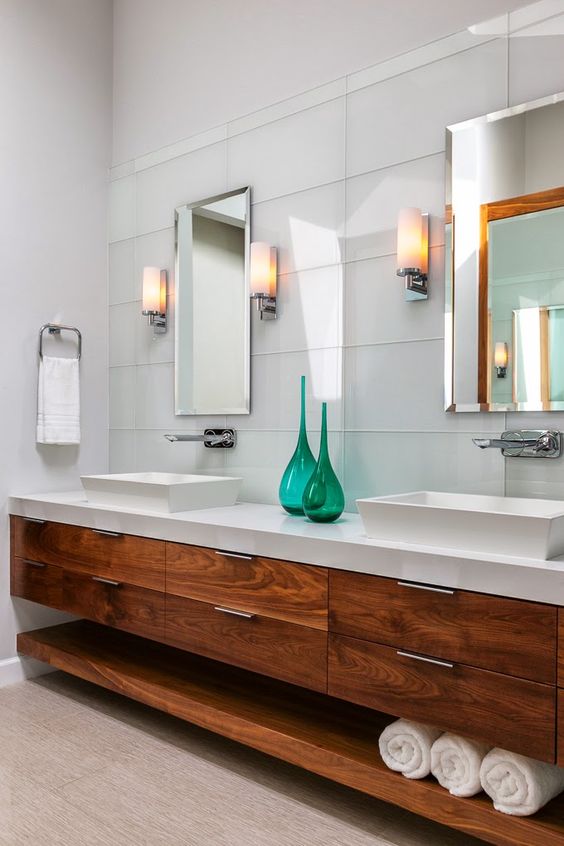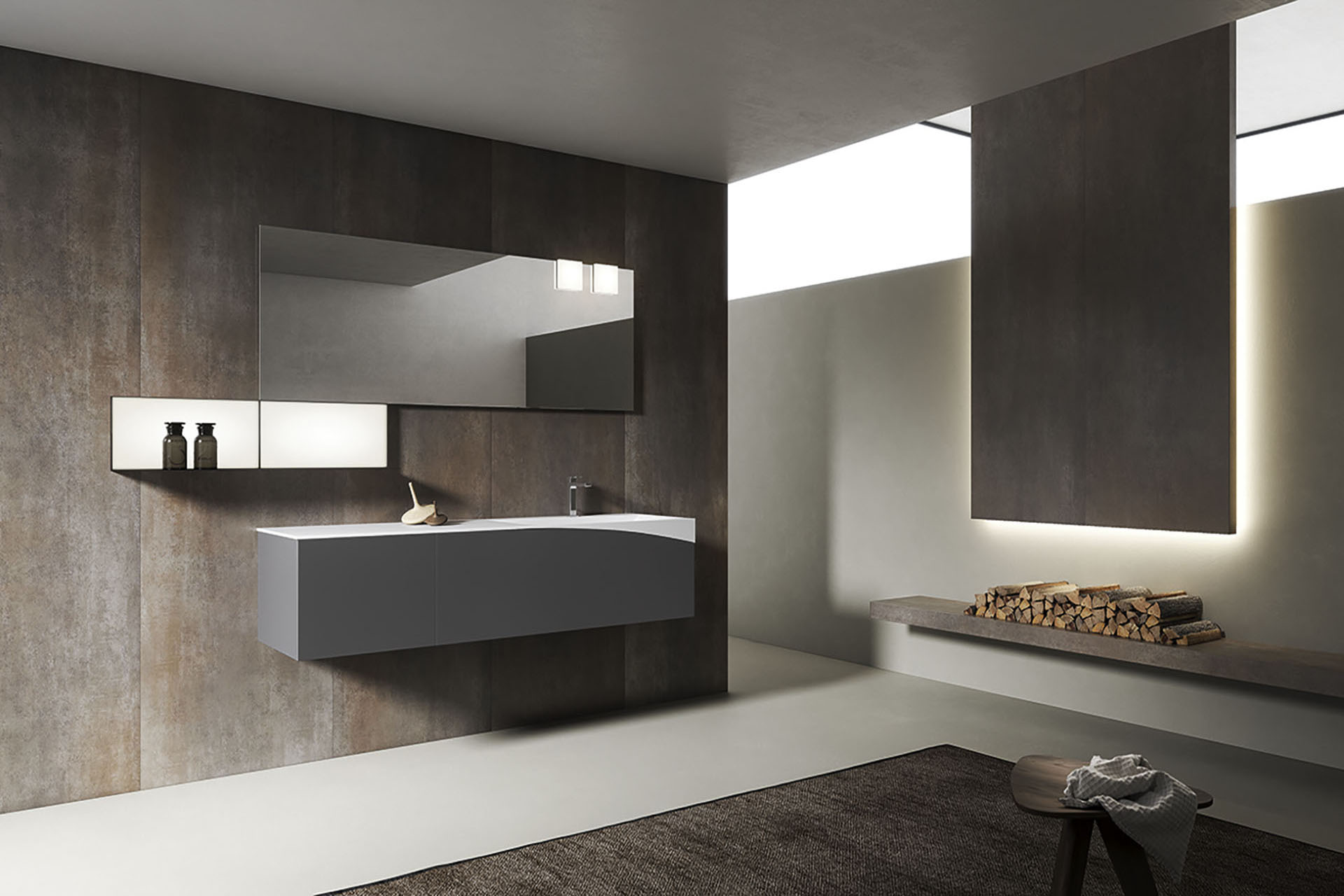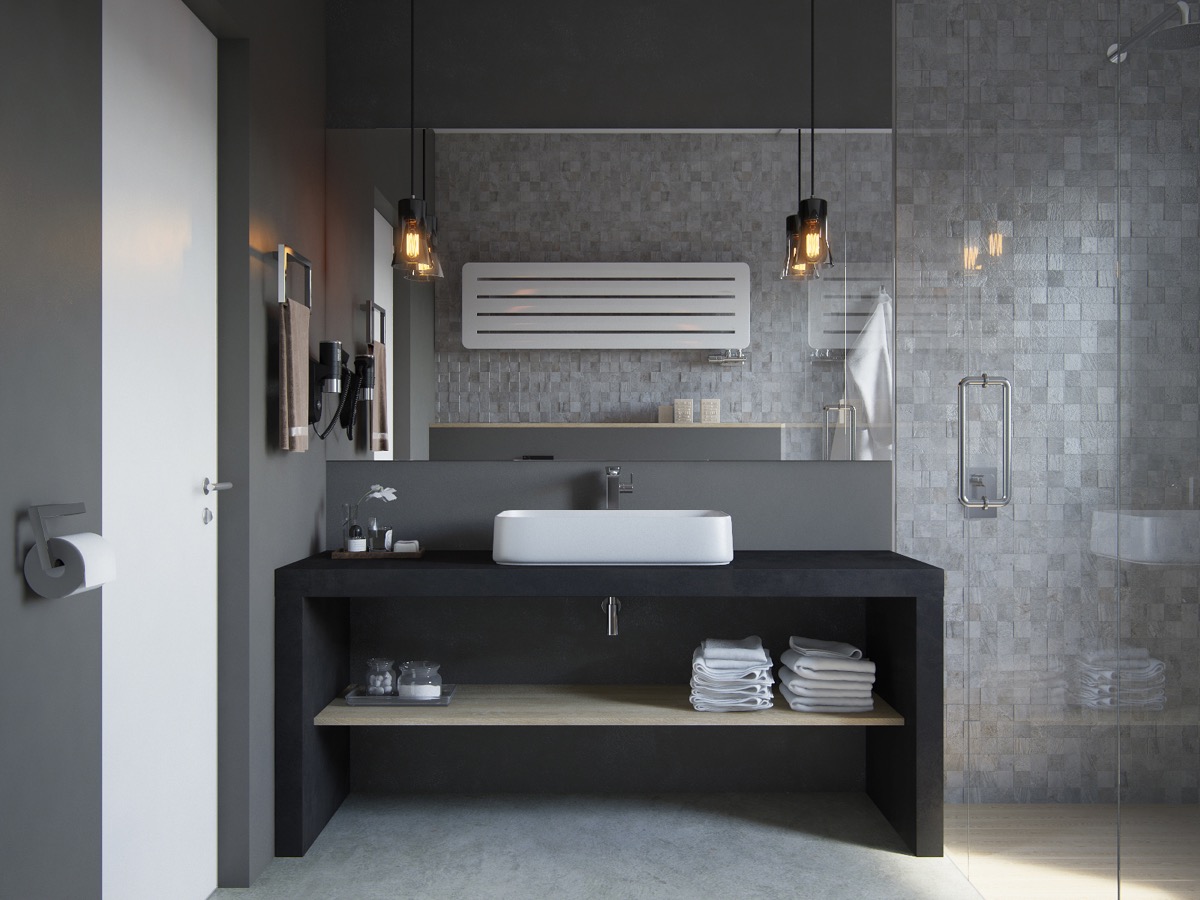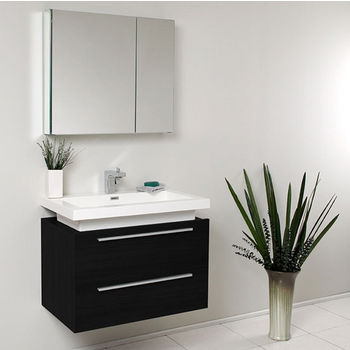The Ultimate Guide to Modern Bathroom Sink Cabinets
Modern bathroom sink cabinets are essential for both functionality and aesthetics. They can transform a simple bathroom into a sleek, stylish space while providing essential storage and support for your sink. Today I’ll walk you through everything you need to know about modern bathroom sink cabinets, from types and materials to installation tips and common mistakes to avoid.
Types of Modern Bathroom Sink Cabinets
Wall-Mounted Cabinets
Wall-mounted cabinets, also known as floating vanities, are a popular choice for modern bathrooms. They are fixed to the wall, creating a clean, open look and making floor cleaning easier. These cabinets give an illusion of more space and are perfect for smaller bathrooms.
Freestanding Cabinets
Freestanding cabinets are versatile and easy to install. They come in various styles and sizes, offering ample storage space. This type of cabinet can be moved if needed, providing flexibility in your bathroom design. They can fit well in both large and small bathrooms.
Corner Cabinets
Corner cabinets are designed to make use of underutilized space. They fit neatly into corners, making them ideal for small or oddly shaped bathrooms. These cabinets maximize storage without taking up much floor space, helping to keep your bathroom organized.
Vessel Sink Cabinets
Vessel sink cabinets are designed to accommodate vessel sinks, which sit on top of the countertop. These cabinets often have a more artistic and stylish design, making them a focal point in modern bathrooms. They offer ample counter space and storage below.
Console Sink Cabinets
Console sink cabinets combine the look of a freestanding sink with additional storage. They have open shelving or drawers beneath the sink, providing storage while maintaining a light and airy feel. This type of cabinet is ideal for modern bathrooms with a minimalist design.
Double Sink Cabinets
Double sink cabinets are perfect for shared bathrooms. They offer two sinks, providing convenience and efficiency for multiple users. These cabinets are usually larger, offering ample storage space and enhancing the functionality of the bathroom.
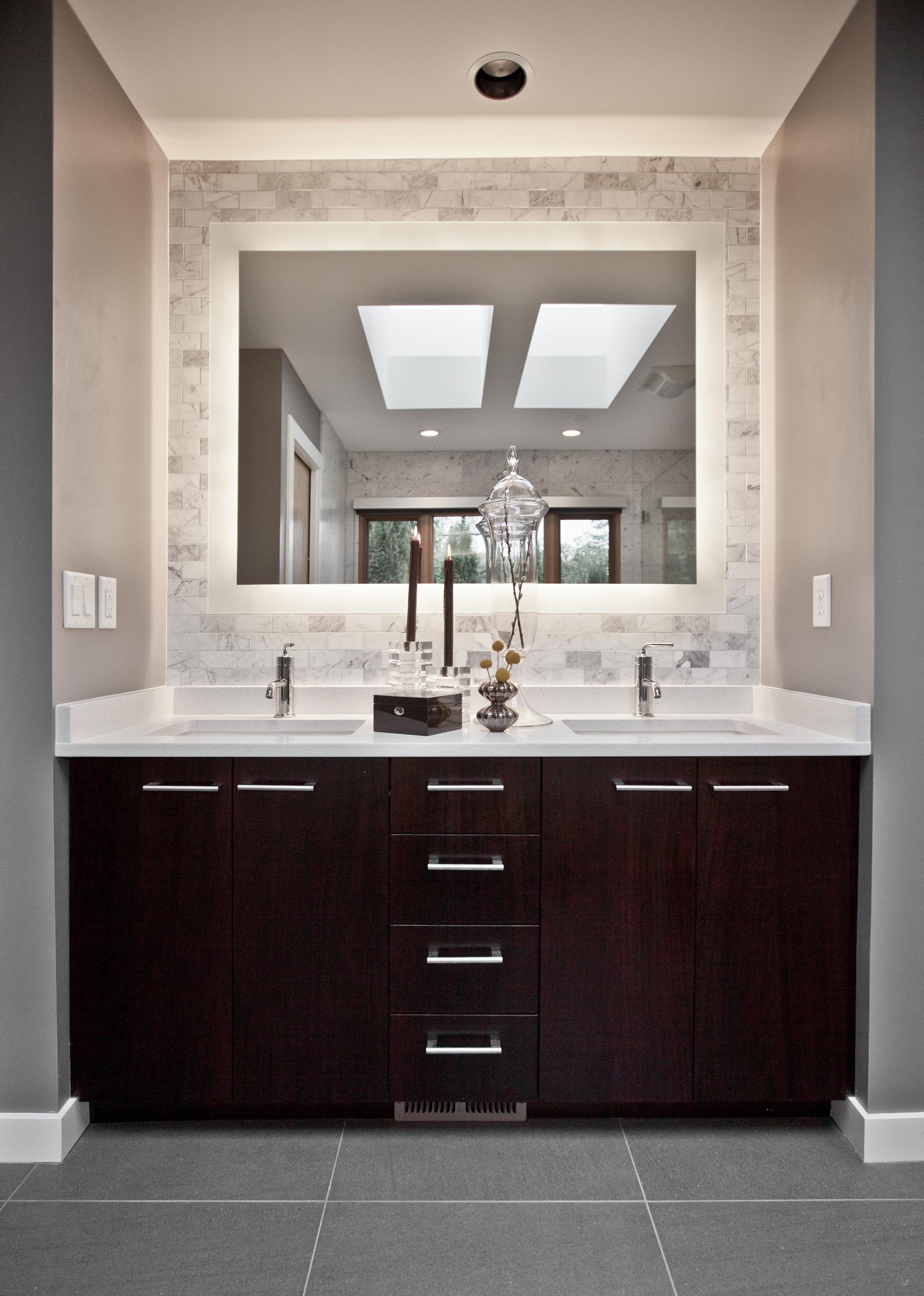
Choosing the Right Material
Wood
Wood is a classic and versatile material for bathroom cabinets. Modern designs often use hardwoods like oak, walnut, or maple for their durability and natural beauty. Wood cabinets can be stained or painted to match your bathroom’s color scheme.
MDF (Medium-Density Fiberboard)
MDF is a cost-effective alternative to solid wood. It is made from wood fibers and resin, providing a smooth surface that can be painted or laminated. MDF is resistant to warping and is a good choice for bathrooms with high humidity.
Metal
Metal cabinets are gaining popularity in modern bathroom designs. They offer a sleek, industrial look and are extremely durable. Stainless steel and aluminum are common choices, providing resistance to moisture and easy maintenance.
Glass
Glass cabinets add a touch of elegance and sophistication to modern bathrooms. They can be fully transparent or frosted for added privacy. Glass is easy to clean and creates a light, open feel, making your bathroom appear larger.
PVC (Polyvinyl Chloride)
PVC cabinets are water-resistant and highly durable, making them ideal for bathrooms. They are available in various colors and finishes, mimicking the look of wood or other materials. PVC is also easy to clean and maintain.
Laminate
Laminate cabinets offer a wide range of design options at an affordable price. They consist of a plastic finish bonded to a composite base, providing a durable and moisture-resistant surface. Laminate can mimic the look of wood, stone, or other materials.
Installation Tips and Techniques
Measuring Your Space
Accurate measurements are crucial for installing bathroom sink cabinets. Measure the width, height, and depth of your space to ensure the cabinet fits properly. Consider the location of plumbing fixtures and allow space for opening doors and drawers.
Preparing the Area
Before installation, prepare the area by removing the old cabinet and clearing the space. Check the condition of the walls and floor, making any necessary repairs. Ensure the plumbing and electrical systems are in place and functioning correctly.
Assembling the Cabinet
If your cabinet requires assembly, follow the manufacturer’s instructions carefully. Use the right tools and hardware to ensure a sturdy and secure structure. Assemble the cabinet close to its final location to avoid moving it around too much.
Securing the Cabinet
For wall-mounted cabinets, use sturdy brackets or anchors to secure the cabinet to the wall. Ensure it is level and firmly attached to prevent any accidents. Freestanding cabinets should be placed on a level surface and secured to the wall for additional stability.
Installing the Sink
Once the cabinet is in place, install the sink according to the manufacturer’s instructions. Connect the plumbing, ensuring there are no leaks. Seal around the sink and countertop with silicone to prevent water damage.
Finishing Touches
After installation, add any finishing touches such as handles, knobs, and decorative elements. Ensure the cabinet doors and drawers open and close smoothly. Clean the area and dispose of any packaging materials responsibly.
Enhancing Functionality with Storage Solutions
Drawers and Shelves
Incorporate drawers and shelves to maximize storage space. Drawers are ideal for smaller items, while shelves can hold larger items like towels and cleaning supplies. Adjustable shelves provide flexibility for different storage needs.
Pull-Out Organizers
Pull-out organizers make it easy to access items stored at the back of the cabinet. They are perfect for storing toiletries, cleaning supplies, and other essentials. These organizers can be installed in both drawers and shelves.
Baskets and Bins
Use baskets and bins to keep smaller items organized. They can be placed on shelves or inside drawers to create separate compartments. Baskets and bins are perfect for storing toiletries, makeup, and other personal items.
Built-In Hampers
Built-in hampers are a convenient addition to bathroom cabinets. They provide a designated space for dirty laundry, keeping it out of sight. Hampers with removable liners make it easy to transport laundry to the washing machine.
Medicine Cabinets
Consider adding a medicine cabinet above the sink for additional storage. Modern medicine cabinets come with mirrors and built-in lighting, providing both storage and functionality. They are perfect for storing medications, first aid supplies, and other small items.
Under-Sink Storage
Make use of the space under the sink with custom storage solutions. Pull-out trays, shelves, and baskets can help keep this area organized. Consider using stackable bins or modular units to maximize vertical space.
Design and Style Considerations
Minimalist Design
Modern bathroom sink cabinets often feature a minimalist design with clean lines and simple shapes. Avoid excessive ornamentation and choose sleek, streamlined fixtures. A minimalist design creates a calm, uncluttered look.
Color Schemes
Choose a color scheme that complements your bathroom’s overall design. Neutral colors like white, gray, and black are popular in modern bathrooms. Consider using bold colors or contrasting finishes for a more dramatic look.
Hardware and Fixtures
Select hardware and fixtures that match your cabinet’s style. Sleek, modern handles and knobs can enhance the overall look. Consider using matte or brushed finishes for a contemporary feel.
Lighting
Proper lighting can enhance the appearance of your bathroom sink cabinet. Use task lighting to illuminate the sink area and accent lighting to highlight the cabinet. LED lights are energy-efficient and provide bright, even illumination.
Mirror Integration
Integrate mirrors into your cabinet design for added functionality and style. Mirrored cabinets provide storage and reflect light, making the bathroom appear larger. Consider using backlit mirrors for a modern, sophisticated look.
Eco-Friendly Options
Consider eco-friendly materials and finishes for your bathroom sink cabinet. Bamboo, reclaimed wood, and low-VOC (volatile organic compounds) finishes are sustainable choices. Eco-friendly cabinets are not only better for the environment but also for your health.
Common Mistakes to Avoid
Overlooking Storage Needs
One common mistake is not considering your storage needs when choosing a cabinet. Make sure the cabinet you select has enough space to store all your bathroom essentials. Think about what you need to store and choose a cabinet with the appropriate number and type of compartments.
Ignoring Measurements
Failing to measure your space accurately can lead to fitting issues. Always double-check your measurements before purchasing a cabinet. Ensure there is enough space for the cabinet and that it will not obstruct any doors or walkways.
Choosing the Wrong Material
Not all materials are suitable for bathrooms. Avoid materials that are not moisture-resistant, as they can warp or deteriorate over time. Choose materials like PVC, laminate, or metal that can withstand the humid bathroom environment.
Neglecting Plumbing
Consider the location of your plumbing when installing a bathroom sink cabinet. Make sure the cabinet has the necessary cutouts for plumbing fixtures. Improper planning can lead to costly modifications and delays.
Skipping Professional Help
Installing a bathroom sink cabinet can be challenging, especially for wall-mounted options. If you’re not confident in your DIY skills, hire a professional. A poorly installed cabinet can lead to damage and safety hazards.
Ignoring Style Consistency
Ensure your bathroom sink cabinet matches the overall style of your bathroom. A cabinet that clashes with the rest of the décor can disrupt the harmony of the space. Choose a design that complements the existing fixtures and finishes.
What is the best material for a bathroom sink cabinet?
The best material depends on your needs and preferences. PVC and laminate are great for moisture resistance, while wood offers natural beauty and durability. Metal provides a sleek, industrial look, and glass adds elegance. Consider your bathroom’s humidity levels and your desired style when choosing a material.
How do I maintain my bathroom sink cabinet?
Regular cleaning and maintenance will keep your cabinet looking new. Wipe down surfaces with a damp cloth and mild cleaner. Avoid harsh chemicals that can damage the finish. Check for leaks and fix any plumbing issues promptly to prevent water damage.
Can I install a bathroom sink cabinet myself?
Yes, you can install a bathroom sink cabinet yourself if you have the necessary skills and tools. Follow the manufacturer’s instructions carefully and ensure you have accurate measurements. For wall-mounted cabinets or complex installations, it’s best to hire a professional.
How do I choose the right size cabinet for my bathroom?
Measure the available space in your bathroom and consider the size of your sink. Ensure the cabinet fits comfortably without obstructing any doors or walkways. For shared bathrooms, consider larger cabinets or double sink options for added convenience.
Are wall-mounted cabinets a good choice for small bathrooms?
Yes, wall-mounted cabinets are excellent for small bathrooms. They create an open, airy feel by freeing up floor space. This design also makes cleaning easier and can make the bathroom appear larger. Ensure the wall is strong enough to support the cabinet.
What are some eco-friendly options for bathroom sink cabinets?
Eco-friendly options include cabinets made from bamboo, reclaimed wood, or materials with low VOC finishes. These materials are sustainable and better for indoor air quality. Choosing energy-efficient lighting and water-saving fixtures can also make your bathroom more eco-friendly.
Modern Wall Mounted Bathroom Vanity w/ Medicine Cabinet
Fresca Lucera 30″ Espresso Wall Hung Modern Bathroom
Related Posts:
- Ada Compliant Commercial Bathroom Sinks
- Bathroom Sink Adapter
- Pull Out Bathroom Sink Faucet
- Kohler Semi Recessed Bathroom Sink
- 1910 Bathroom Sink
- Bathroom Sink Unclogging Products
- How To Replace A Drop In Bathroom Sink
- Delta Gold Bathroom Sink Faucets
- Vintage Bathroom Sinks And Vanities
- Recessed Bathroom Sink

